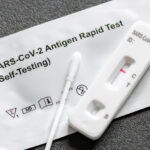Mental Health is Vital to Preparedness and Response
By Dr. Octavio N. Martinez, Jr., MD, MPH, MBA, FAPA, Executive Director, the Hogg Foundation for Mental Health at The University of Texas at Austin
This story was published in Ready or Not: Protecting the Public’s Health from Diseases, Disasters and Bioterrorism.
The health effects from a public health emergency go way beyond the physical, taking an enormous mental toll in the immediate aftermath and the years following—and often can harm our children the most.
We must do more to know how to ensure mental health and physical health go hand-in-hand in response planning and efforts. We must also do a far better job of increasing our mental health workforce and ensuring and increasing access to mental health services both during and after an emergency.
Using Data to Plan for Maintaining Access to Mental Health Services
To prepare for any type of emergency, communities must be aware of vulnerable populations—typically children, the elderly and those who have an underlying medical condition or are mentally ill. We have gotten better at identifying where groups of these populations live.
And, we should also be able to access databases to predict what portion of a certain population might have substance use disorders, for example—and then understand what kind of continued treatment and medication are needed and where they might best be distributed.
Paired with this, we should be able to identify geographically which communities will have the hardest time bouncing back from an emergency and will need more resources.
While some neighborhoods might have good infrastructure and better access to transportation and physical and mental health services, others will struggle. The neighborhoods that will struggle should be identified in advance and plans created to help them. And, we can create plans based on any number of scenarios: fires, floods, wind damage, loss of power, etc. If you combine all the knowledge and data together, you can then coordinate resources and everyone has a chance to be healthy.
Long-term Strategies to Improve Responses to Emergencies
We also must acknowledge that human connections are incredibly important. In-between disasters, preparedness work should focus on strengthening families and communities so they are resilient enough to weather an emergency.
For example, after Hurricane Katrina, New Orleans developed community leaders specifically focused on mental wellness, resilience and recovery. The gains in improved access to care and lessened stigma were noticeable—and these should help ensure responders and communities can work together to forge a better response during the next emergency.
While this is by no means a quick fix, taking a long-term approach to emergency preparedness and community health will pay dividends in improved health of the entire population. We should bring this research to other cities and communities that will likely face similar events.
Additionally, psychological effects can take years to manifest and get under control—especially if there isn’t access to mental health services. We learned from Hurricanes Katrina and Sandy that PTSD and suicidal ideation increased dramatically after these events. However, if we were able to step in earlier and connect individuals with mental health professionals, it’s likely these issues and potentially other health issues (substance use disorders, increased anxiety, depression, etc.) could have been prevented or lessened.
Further, while we are getting better at recognizing that mental health is a key component to physical health, the workforce in this area is inadequate—and we’ve known this for a while, especially as the opioid epidemic has continued. By increasing our workforce and ensure they have the right skill sets; we could help tackle the opioid epidemic and better prepare our communities to bounce back from a disaster.
Additional Research is Needed
The devil is often in the details and coordination among the various federal, state and local agencies, organizations and others must be improved. To do so, the nation has to prioritize funding into research and assessments post emergencies—so we can truly understand how these events affect the mental health and stability of a community at a population level.
While the National Institutes of Health has a Disaster Research Response Project, it needs to better include measures on mental health and substance use disorders. We must take each disaster as a learning opportunity that can prepare us for the next one and enable us to save more lives. Increasing research would also help build a network of behavioral health disaster experts.
First Responders
Our first responders and volunteers must be trained to identify and assist people who exhibit psychiatric symptoms, i.e., in “psychological first aid.” And, going beyond this training, we know that mental health must be better integrated with the traditional health services.
Responders and volunteers must also be cared for—they are at risk for suffering secondary psychiatric distress themselves. We need better ways to monitor them during but also after the crisis to ensure they are receiving the appropriate interventions and care.
Part of the solution is increased mental health providers, which would serve many roles: keeping our first responders in good shape, filling gaps in mental health services and, by increasing access to care, hopefully preventing someone from developing a serious and chronic mental health illness.
Quite simply, if we intentionally make mental health part of our preparedness and response systems it will have untold benefits for communities before, during and after an emergency—we will build resiliency and improve well-being.

